 |
 |
|||||||||||||||||||||
|
||||||||||||||||||||||
AZFO FIELD EXPEDITION
Field Expedition to the Chuska Mountains-Northeast Arizona
5-6 June 2010
By Steve Ganley
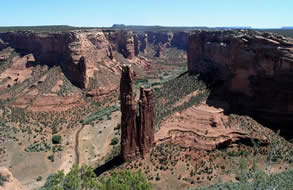
On the evening of June 4th, seven adventurous members of the Arizona Field Ornithologists met in the campground of the Canyon de Chelly National Monument in preparation for our expedition into the Chuska Mountains of extreme northeast Arizona. This mountain range is seldom visited by birders, being far from any major metropolitan area and it has few access roads. Add to that the fact that it is on the Navajo Indian Reservation you can see why there is very little information on the birds of this range. Over the next day and a half we found about 80 species of birds and some very beautiful scenery.
Breaking camp from Canyon de Chelly on June 5th,we took a quick look around the campground. We had Bullock’s Oriole, American Crow, Black-headed Grosbeak, American Kestrel, Western Tanager, Pine Siskins, a singing Warbling Vireo and White-throated Swifts were a few of the campground birds. We also had Common Nighthawk and Western Screech-Owl during the night.
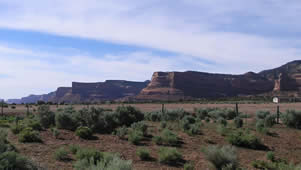
After driving up the north side drive, our first stop was Tsaile Lake. Here we had Chipping Sparrows, Sage Sparrow and singing Vesper Sparrows. Turning our attention to the water we noticed a gull which turned out to be a California Gull. There were Western Grebe, Canada Geese, Gadwall, Mallard and Ruddy Ducks on the lake, an adult Bald Eagle and many Turkey Vultures in the trees across the lake. Our only shorebird were Killdeer, we had a few Great Blue Heron, Mountain Bluebirds and both Violet-green Swallow and Northern Rough-winged Swallows patrolled the sky.
As we left the sagebrush and started up the canyon, the change of habitat gave us some new species. We had Green-tailed Towhee, Plumbeous Vireo, Western Bluebirds, Western Scrub-Jay, Acorn Woodpecker, White-breasted Nuthatch, Lesser Goldfinch, Gray-headed Junco and the star of the stop was a Lewis’s Woodpecker.
After just a few miles in we came across a stream that flowed through a green meadow. Here we were able to detect a few new species. There were singing Hermit Thrush, Pygmy Nuthatch, Yellow-rumped Warblers, Red-shafted Flicker, Red Crossbills, Dusky Flycatcher, Spotted Towhee, Mountain Chickadee, Grace’s Warbler, Red-breasted Nuthatch, Cassin’s Finch, nesting Warbling Vireo and it was here that we encountered our first Clark’s Nutcracker.

As we continued to climb higher in elevation, our diversity of species became smaller. We added Broad-tailed Hummingbird, Ruby-crowned Kinglet, Orange-crowned Warbler, Cordilleran Flycatcher, Steller’s Jay, Olive-sided Flycatcher, Hairy Woodpecker, Sharp-shinned Hawk, Red-naped Sapsucker and our only other shorebird was a Spotted Sandpiper on a small pond in the pines. When we got to the top of the mountains at Roof Butte, we decided not to continue down the steep and rocky road to Buffalo Pass and instead retraced our way back and headed for Wheatfield Lake and our campsite for the evening.
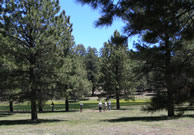
Our Wheatfield Lake campground provided us with several singing Plumbeous Vireos, Grace’s Warbler, constant Violet-green Swallows overhead and a pair of Purple Martins, a species not found in the area during the breeding bird atlas. We also had Hairy Woodpecker, Say’s Phoebe, Common Nighthawk and the last bird of our first day in the field was a Great Horned Owl calling in the night.
Our second day started with looking over the lake and we found a Clark’s Grebe in with the Western Grebes. We then headed for the town of Lukachukai and another road into the Chuskas. Here there are some very interesting sandstone formations and a flowing Lukachukai Creek. This stop added a Red-tailed Hawk, Black-throated Gray Warbler, Virginia’s Warbler, Band-tailed Pigeon and there was a mystery warbler singing along the creek. Our team didn’t take long to find not one, but several male MacGillivray’s Warblers on territory.
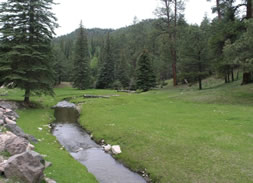
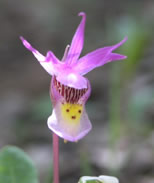
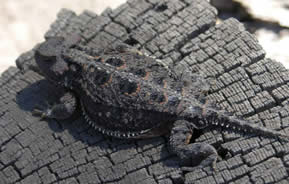
We added Wild Turkey and another Clark’s Nutcracker then we ended the expedition at about noon at Buffalo Pass with everyone having a long drive home. From Buffalo Pass you can see Ship Rock in New Mexico, Ute Mountain and the San Juans in Colorado. I would like to thank AZFO members Larry Norris, Mark Riegner and his two sons Micah and Gabriel, Tim Helentjaris and Philip Kline for an enjoyable time.

|
©2010 |
HOME | | | REPORT SIGHTINGS | | | PHOTOS | | | BIRDING | | | JOURNAL | | | ABOUT US | | | CHECKLISTS | | | AZ BIRD COMMITTEE | | | EVENTS | | | LINKS |